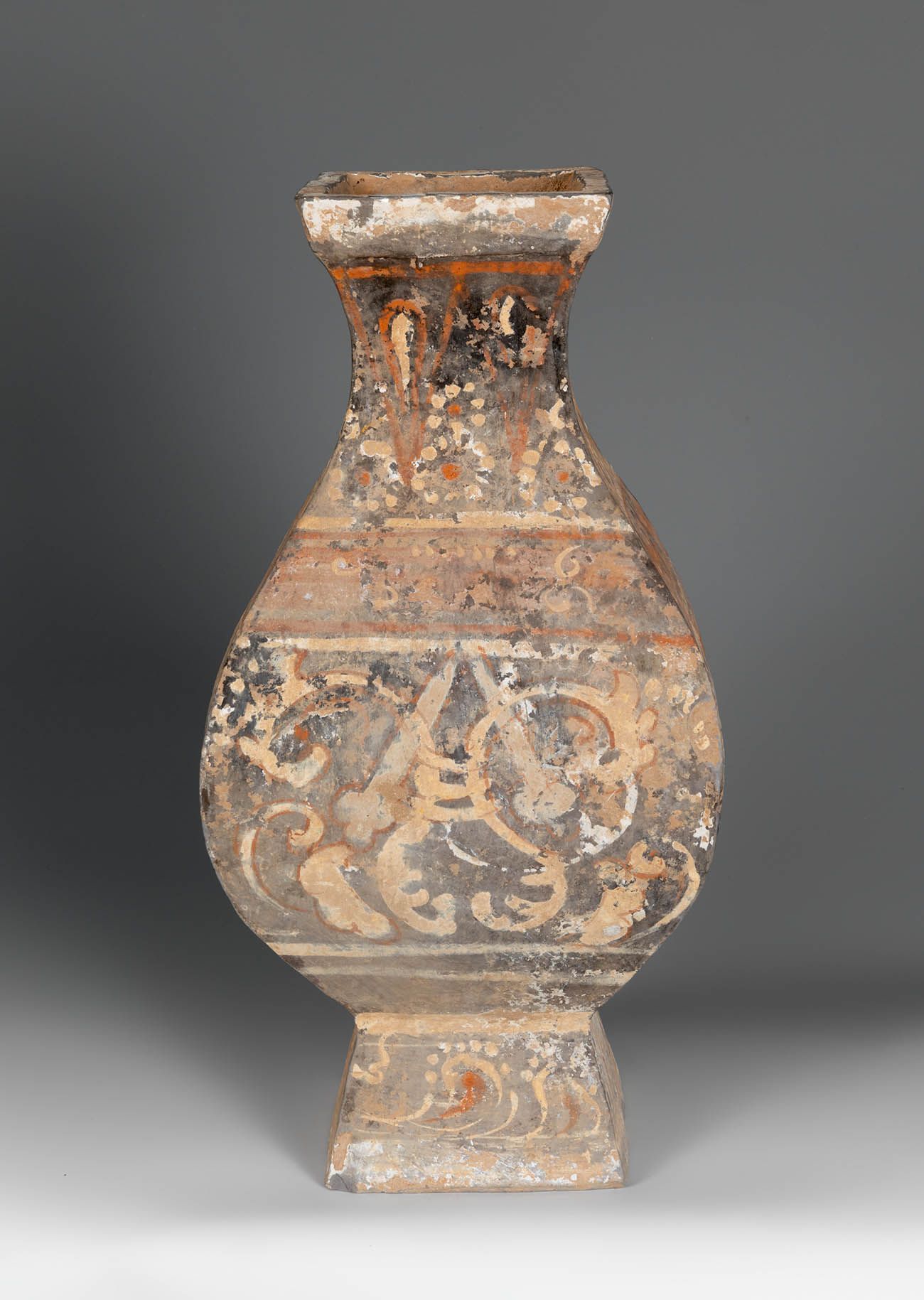Description
Vessel. China, Shang Dynasty, 1,600 BC-1,100 BC. Decorated ceramic. Size: 39 x 18 cm. Chinese vase from the Shang dynasty. It has a square base on which the vessel stands, wider in the lower part and stylised towards the neck, which is also square in shape. It is decorated on all sides with geometric and vegetal motifs and even the effigy of a dragon. In general, in Chinese culture, the dragon signifies good omens and good luck, and plays an important role in warding off evil, dispelling scourges and blessing. During its seven hundred years of existence, the Shang culture was also responsible for important developments in Chinese ceramics and jade carving, as well as Chinese lacquer and ivory carving - see for example the Shang ivory and turquoise cups at the Chinese Academy of Social Sciences, Beijing. All this is made clear by archaeological discoveries at Anyang (formerly Yin), the Shang capital (1350-1046 BC), which have unearthed eleven royal tombs, the remains of numerous palaces and sacred sites of animal and human sacrifice, along with thousands of artefacts in bronze, jade, stone, ivory and bone, and ceramic clay. In addition, other discoveries at Anyang, dating to the later period 1200-1000 BC, indicate that the Shang culture had developed its own highly sophisticated writing system.
42
Vessel. China, Shang Dynasty, 1,600 BC-1,100 BC. Decorated ceramic. Size: 39 x 18 cm. Chinese vase from the Shang dynasty. It has a square base on which the vessel stands, wider in the lower part and stylised towards the neck, which is also square in shape. It is decorated on all sides with geometric and vegetal motifs and even the effigy of a dragon. In general, in Chinese culture, the dragon signifies good omens and good luck, and plays an important role in warding off evil, dispelling scourges and blessing. During its seven hundred years of existence, the Shang culture was also responsible for important developments in Chinese ceramics and jade carving, as well as Chinese lacquer and ivory carving - see for example the Shang ivory and turquoise cups at the Chinese Academy of Social Sciences, Beijing. All this is made clear by archaeological discoveries at Anyang (formerly Yin), the Shang capital (1350-1046 BC), which have unearthed eleven royal tombs, the remains of numerous palaces and sacred sites of animal and human sacrifice, along with thousands of artefacts in bronze, jade, stone, ivory and bone, and ceramic clay. In addition, other discoveries at Anyang, dating to the later period 1200-1000 BC, indicate that the Shang culture had developed its own highly sophisticated writing system.
